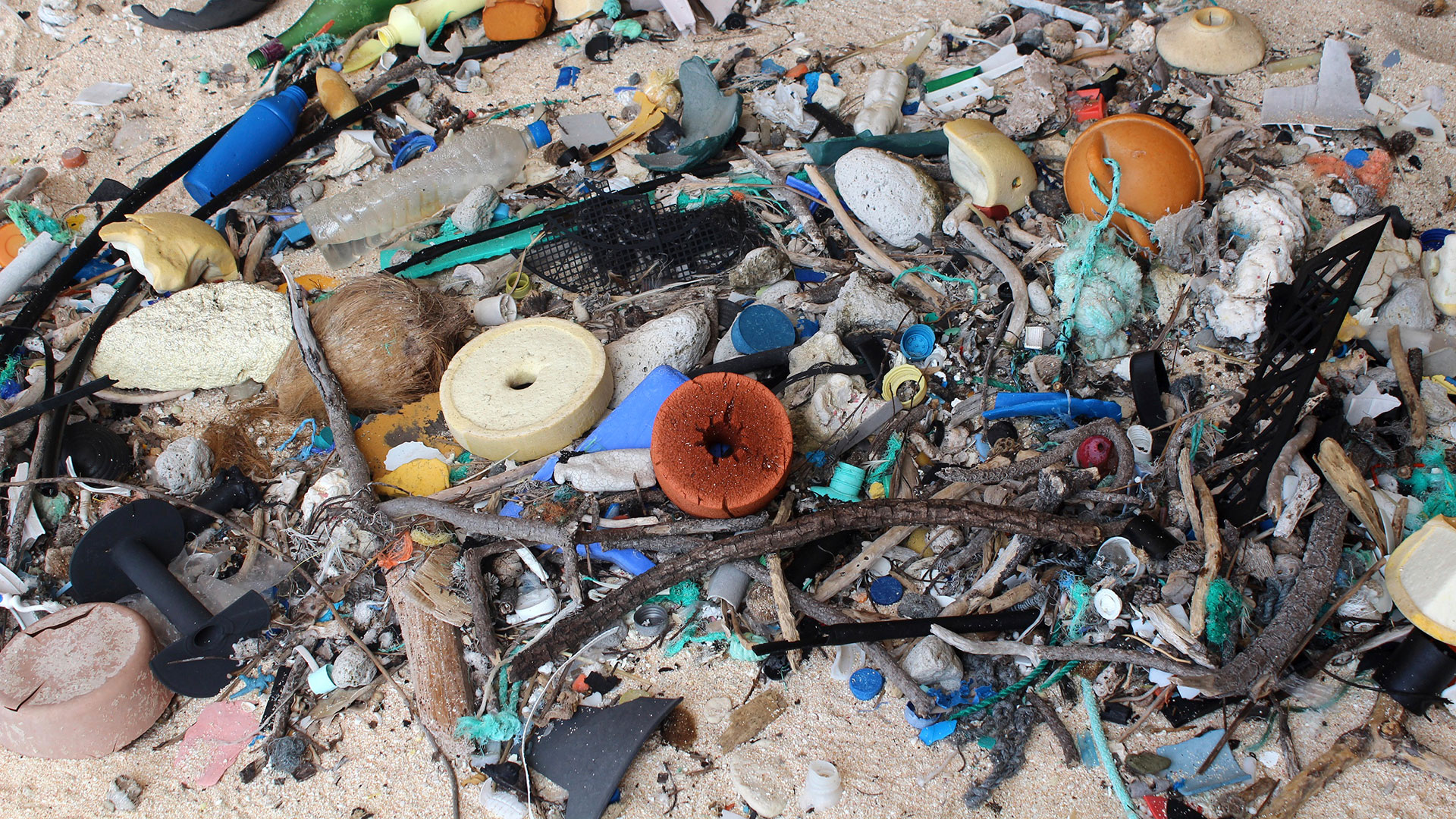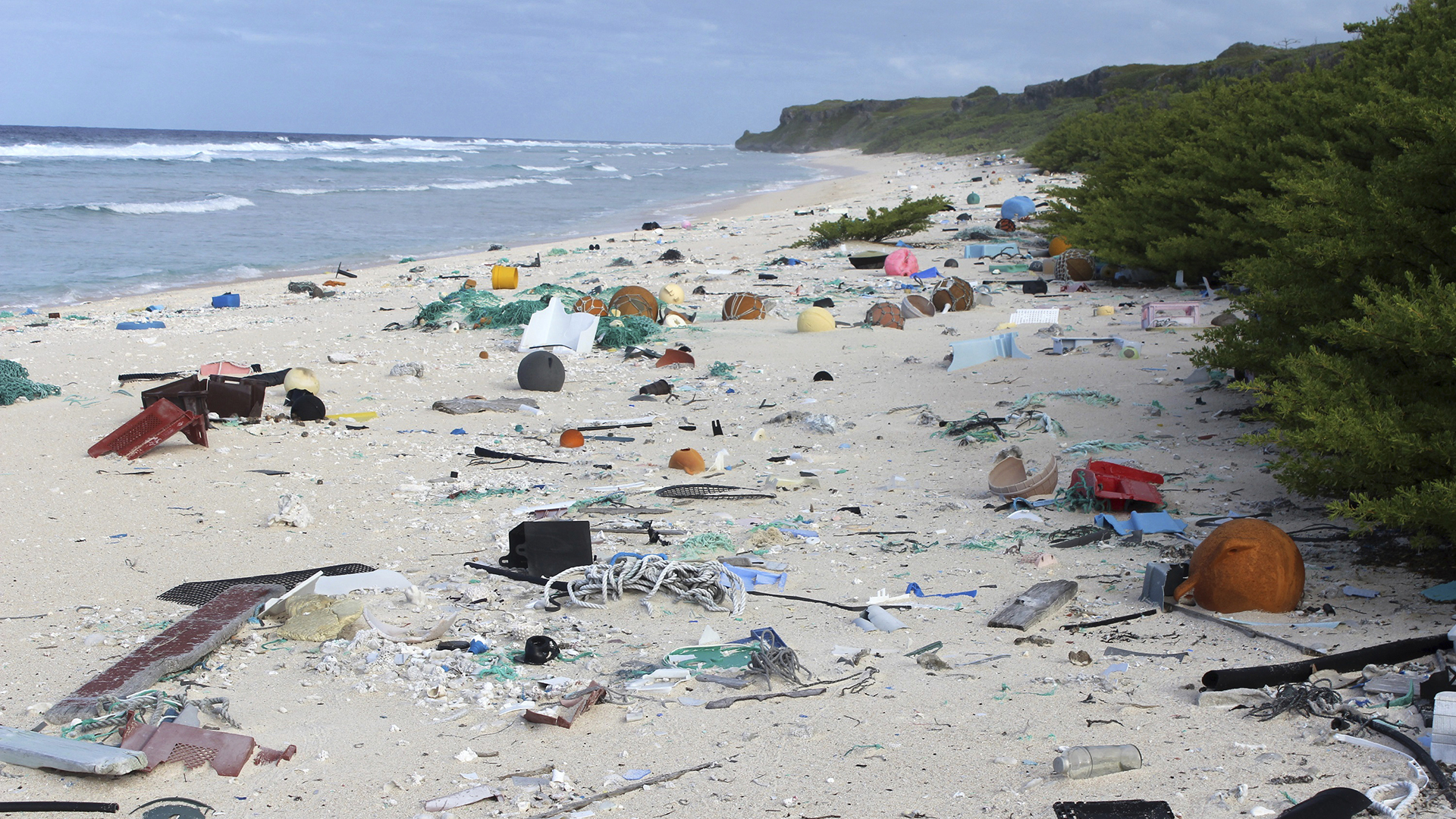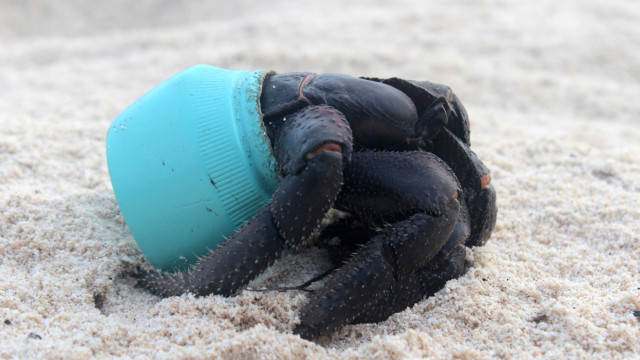When researchers traveled to a tiny, uninhabited island in the middle of the Pacific Ocean, they were astonished to find an estimated 38 million pieces of trash washed up on the beaches.
Almost all of the garbage they found on Henderson Island was made from plastic. There were toy soldiers, dominos, toothbrushes and hundreds of hardhats of every shape, size and color.
The researchers say the density of trash was the highest recorded anywhere in the world, despite Henderson Island’s extreme remoteness. The island is located about halfway between New Zealand and Chile and is recognized as a UNESCO world heritage site.

In this 2015 photo provided by Jennifer Lavers, plastic debris is strewn on the beach on Henderson Island. When researchers traveled to the tiny, uninhabited island in the middle of the Pacific Ocean, they were astonished to find an estimated 38 million pieces of trash washed up on the beaches. (Jennifer Lavers via AP)
Lavers and six others stayed on the island for 3½ months in 2015 while conducting the study. They found the trash weighed an estimated 17.6 tons and that more than two-thirds of it was buried in shallow sediment on the beaches.
Lavers said she noticed green toy soldiers that looked identical to those her brother played with as a child in the early 1980s, as well as red motels from the Monopoly board game.
She said the most common items they found were cigarette lighters and toothbrushes. One of the strangest was a baby pacifier.
She said they found a sea turtle that had died after getting caught in an abandoned fishing net and a crab that was living in a cosmetics container.

In this 2015 photo provided by Jennifer Lavers, plastic debris is strewn on the beach on Henderson Island. When researchers traveled to the tiny, uninhabited island in the middle of the Pacific Ocean, they were astonished to find an estimated 38 million pieces of trash washed up on the beaches. (Jennifer Lavers via AP)
By clearing a part of a beach of trash and then watching new pieces accumulate, Lavers said they were able to estimate that more than 13,000 pieces of trash wash up every day on the island, which is about 10 kilometers (6 miles) long and 5 kilometers (3 miles) wide.
Henderson Island is part of the Pitcairn Islands group, a British dependency. It is so remote that Lavers said she missed her own wedding after the boat coming to collect the group was delayed.
Luckily, she said, the guests were still in Tahiti, in French Polynesia, when she showed up three days late, and she still got married.
Lavers said she is so appalled by the amount of plastic in the oceans that she has taken to using a bamboo iPhone case and toothbrush.
“We need to drastically rethink our relationship with plastic,” she said. “It’s something that’s designed to last forever, but is often only used for a few fleeting moments and then tossed away.”
Melissa Bowen, an oceanographer at the University of Auckland in New Zealand who was not involved in the study, said that winds and currents in the gyre cause the buildup of plastic items on places like Henderson Island.
“As we get more and more of these types of studies, it is bringing home the reality of plastic in the oceans,” Bowen said.
Tons of trash removed as China cleans up world’s highest mountain
Meanwhile, in China, the Tibet Autonomous Region launched a nine-day clean-up campaign of Mount Qomolangma last Saturday, with four tons of waste and debris collected in the first five days, Xinhua News Agency reported.
Every year, the north face of the mountain attracts around 60,000 visitors, who often leave numerous tin cans, plastic bags, stove equipment, discarded tents, oxygen tanks and mountain climbing paraphernalia at their campsites.
With an altitude of over 8,840 meters, Mount Qomolangma is the highest mountain in the world.

Heightened human activities have left unacceptable levels of garbage on the “Roof of the World,” said Nyima Cering, deputy director of Tibet Sports Administration. He added that it was the first time the administration had worked with the Tingri county government in Xigaze Prefecture on such a campaign.
The ongoing clean-up, which involved both Chinese and international volunteers, focuses on the campsites at altitudes between 5,200 and 6,500 meters.
 CGTN America
CGTN America
 In this 2015 photo provided by Jennifer Lavers, a crab uses as shelter a piece of plastic debris on the beach on Henderson Island. When researchers traveled to the tiny, uninhabited island in the middle of the Pacific Ocean, they were astonished to find an estimated 38 million pieces of trash washed up on the beaches. (Jennifer Lavers via AP)
In this 2015 photo provided by Jennifer Lavers, a crab uses as shelter a piece of plastic debris on the beach on Henderson Island. When researchers traveled to the tiny, uninhabited island in the middle of the Pacific Ocean, they were astonished to find an estimated 38 million pieces of trash washed up on the beaches. (Jennifer Lavers via AP)

